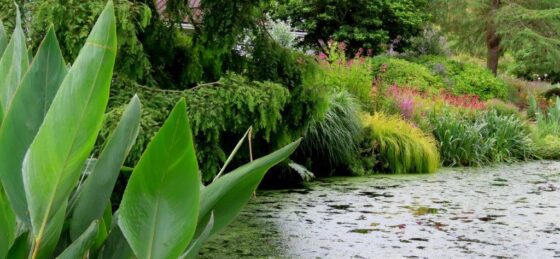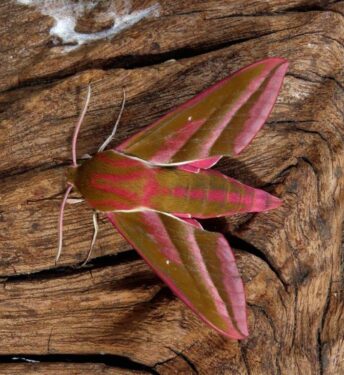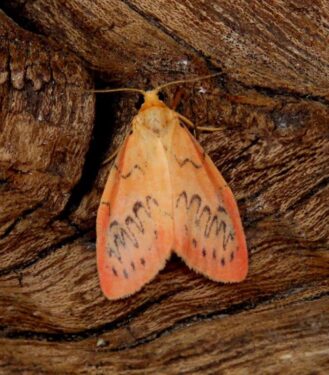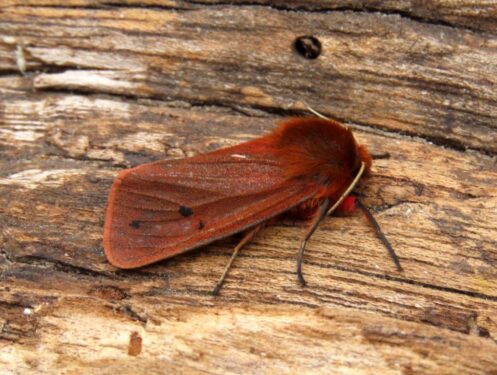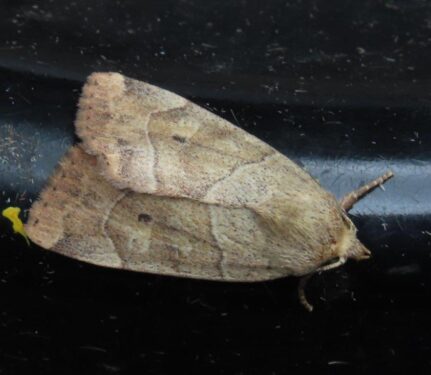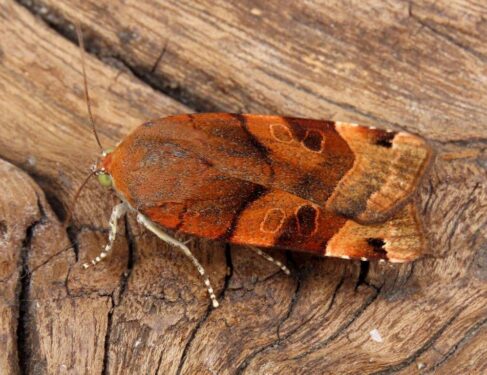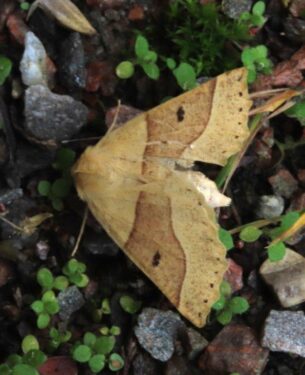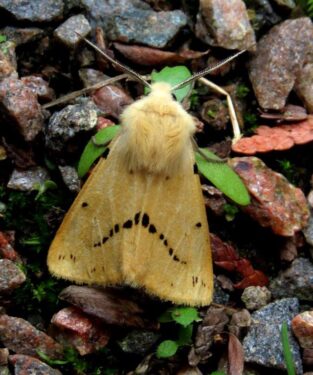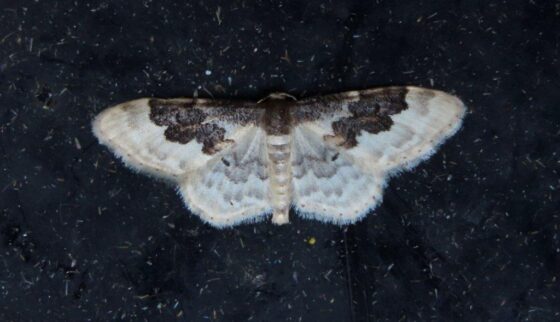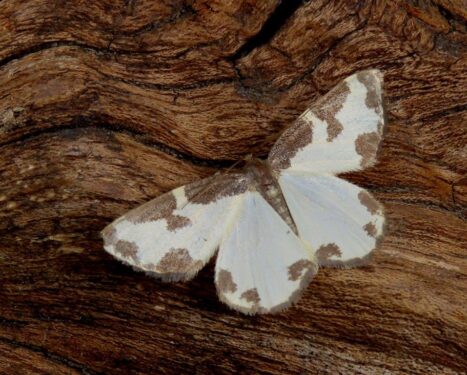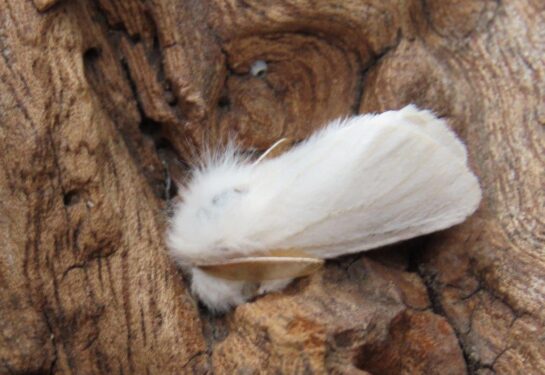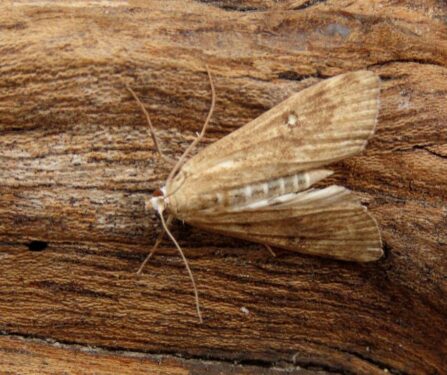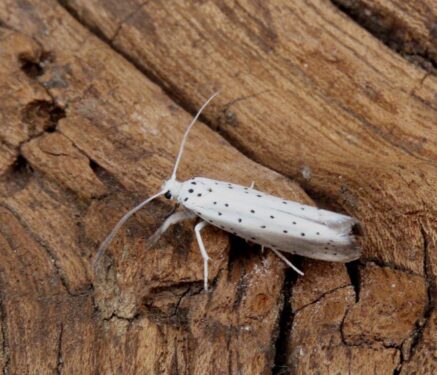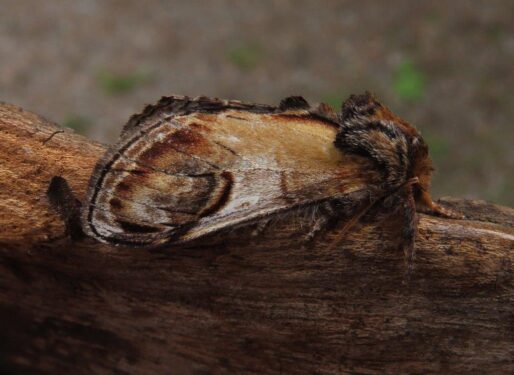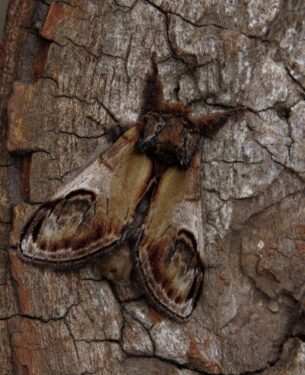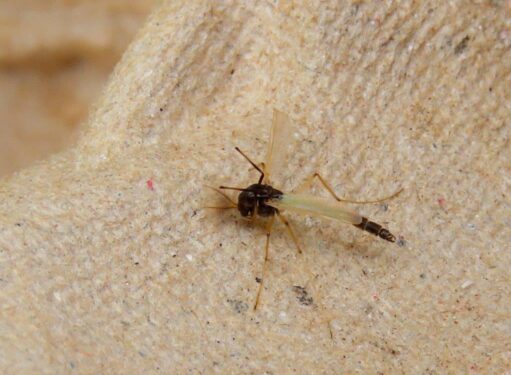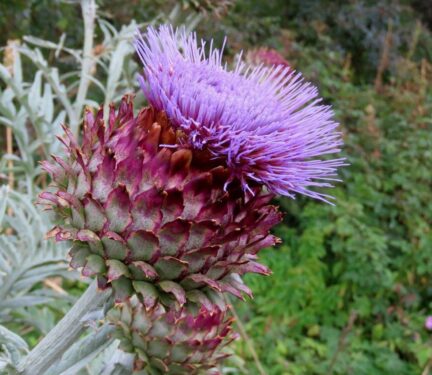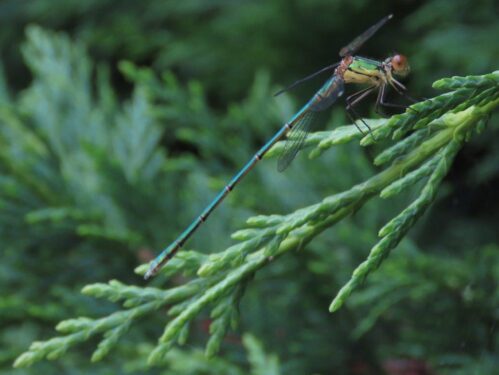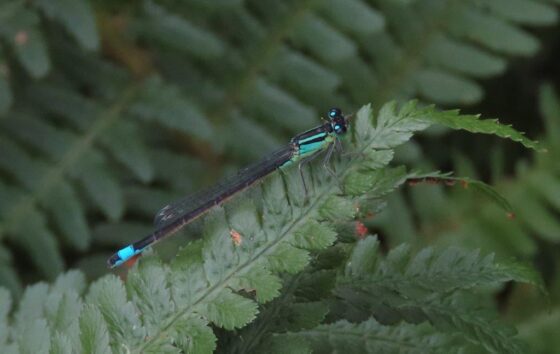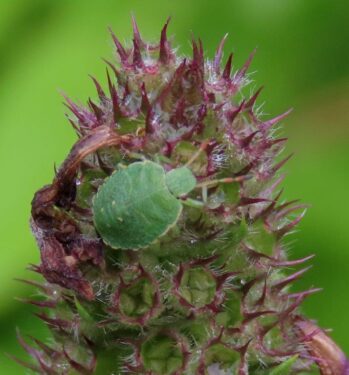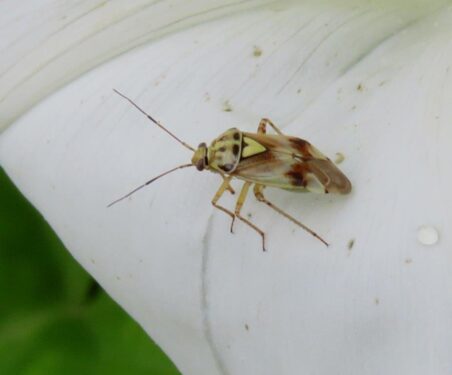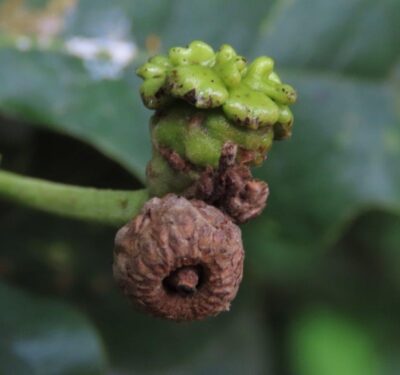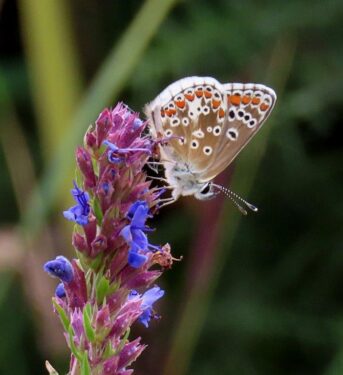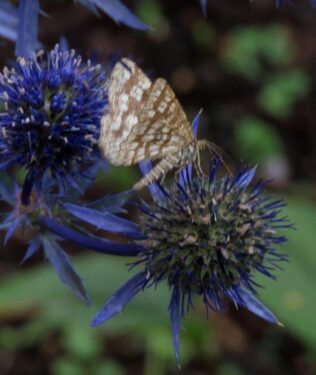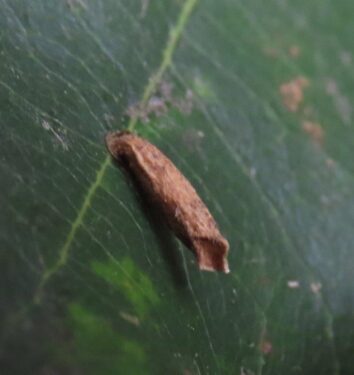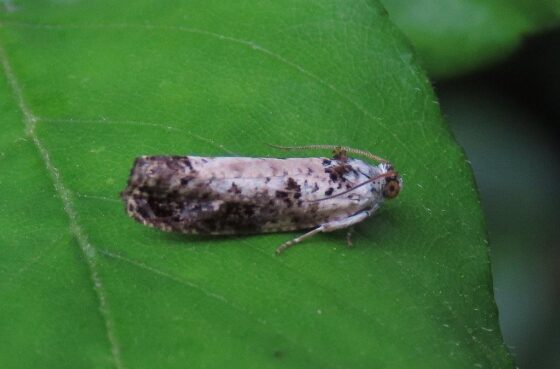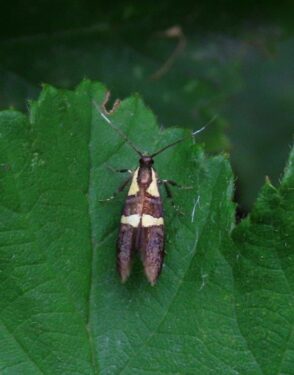Our second ‘Moth Morning’ of the year at Beth Chatto’s was a great success! The first one (see here) a few weeks ago had turned out to be rather disappointing moth-number-wise, so we were doubly delighted by the number of winged beauties that graced our trap this time.
We set the trap on a reasonably warm night, and luckily Chris’ Heath Robinson waterproof cover was assembled ‘just in case’. Although the BBC forecast 0% chance of rain, we had a huge shower late evening, which would have proved fatal for an unprotected hot bulb! The following morning we arrived to find the trap cover and surrounding sheets dotted with moths of all shapes and sizes and a quick peek in the trap itself was very encouraging.
Our group who had signed up for the morning event were pleased and interested to see the moths as they were unveiled from the trap one by one. See here Beth Chattos moth morning 22 July 2023 for the full list of species; clear highlights were Elephant Hawk-moth, several Rosy Footmen and a Ruby Tiger, all in their red and pink shades:
Naturally there were plenty of ‘standard’ brown moths like this Dun-bar, but even some of those were remarkably colourful. We have never seen such a richly marked Broad-bordered Yellow Underwing before…
Yellow-brown shades came from Scalloped Oak and Buff Ermine…
… while largely white ones included Least Carpet, Clouded Border and Brown-tail.
We didn’t concentrate too much on micros, although there were several Ringed and Small China-marks (reflecting the proximity of the ponds) and three species of small ermine (Willow, Spindle and Apple Ermine).
And finally from the trap, two views of a pristine Pebble Prominent, one to show its namesake prominent scales in profile and the second to show its remarkable camouflage against a woody backdrop.
In the event a total of some 40 species of macromoths plus a dozen or so micros were logged, and released unharmed. To these we must add the ‘bycatch’ of green lacewings, caddisflies and a tiny, rather attractive non-biting midge Microtendipes pedellus. Why remark on this? Well, it seems to be very scarce in Essex indeed, the Essex Field Club distirbution map showing only two previous locations, neither of which is anywhere near us!
One bonus of these Moth Mornings is that our group has exclusive access to the garden between 9 and 10am. We had hoped for a sun-dappled, warm morning – the reality was dull, overcast and unseasonably chilly – but at least no rain (unlike later in the day!)…
We spent a very enjoyable hour walking around the garden, looking at plants that were attracting insects even at that early hour and in somewhat adverse conditions.
There were bumblebees, Honeybees and social wasps galore, especially among the Bistortas, and a range of hoverflies, including the largest of all (if rather fleetingly) the Hornet Hoverfly. Pond-life was represented by Willow Emerald and Blue-tailed Damselflies:
Our personal favourites the true bugs were represented by some ‘teenage’ Green Shield-bugs and a Tarnished Plant-bug, and the galls by some emerging knoppers on developing acorns:
… while the few early butterflies included Red Admirals and Gatekeepers, and a confiding Brown Argus.
And to complement the moth trap, we found some ‘free-range’ moths, including Latticed Heath on the Eryngium, the case of a tiny base-bearer Coleophora sp., one of the ‘bird-poo micros’ White-backed Marble, and best of all the Scarce Forest Tubic, an uncommon moth in Essex and the country as a whole, typically an inhabitant of ancient woodlands.
If you are interested in such events, please keep an eye on the Beth Chatto website for similar events next spring and summer. Provisional dates are 22nd June 2024 and 20th July 2024. These are run by and in support of the Beth Chatto Education Trust, established by Beth to carry forward her passion for plants and the ecological approach to all.
